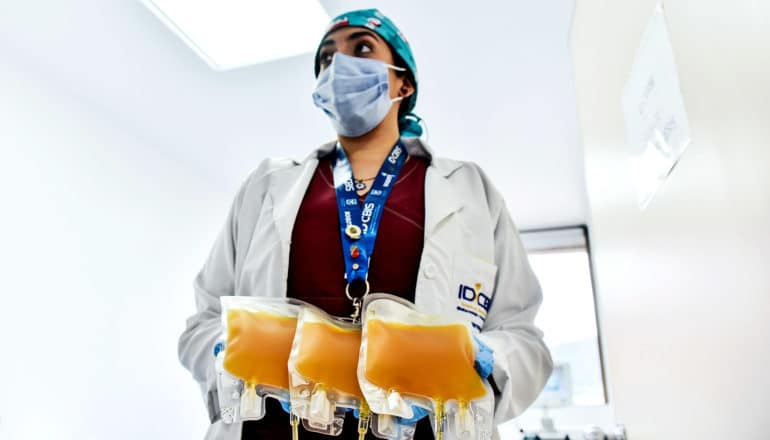
A new paper details how convalescent plasma, once considered a promising way to treat people with mild to moderate COVID-19, did not prove effective.
In February, the National Institutes of Health terminated an ambitious clinical trial to study the effectiveness of COVID-19 convalescent plasma because the treatment showed little benefit in an interim analysis.
COVID-19 convalescent plasma refers to blood plasma derived from patients who have recovered from COVID-19 and, as a result, have developed antibodies. Although forms of convalescent plasma therapy have been used as therapy for other infections since the early 1900s, few randomized, controlled trials have set out to evaluate whether COVID-19 convalescent plasma improves clinical outcomes.
Convalescent plasma started making headlines in the summer of 2020, when the Food and Drug Administration gave it emergency use authorization to treat COVID-19, despite objections from some scientists that the therapy was unproven and merited additional study.
In the 12 months since, tens of thousands of Americans have received COVID-19 convalescent plasma, though most of the data on its effectiveness comes from analyses of patient data rather than trials.
Launched in August 2020, the recently published trial, known as C3PO, was as a collaborative effort between the NIH-sponsored Strategies to Innovate Emergency Care Clinical Trials Network and Stanford University’s Clinical Excellence Research Center.
Participants were adults who went to the hospital emergency departments with mild to moderate symptoms that they had for a week or less, and who had at least one risk factor associated with the potential to develop severe COVID-19, including obesity, asthma, and Type 2 diabetes.
“This was a phenomenal trial producing important results with unparalleled speed and efficiency during the challenges of the pandemic,” says James Quinn, professor of emergency medicine.
As of February, researchers had enrolled only 511 of the target 900 participants when the NIH halted the trial based on its interim analysis. Researchers determined that COVID-19 patients who received convalescent plasma did not have a lower incidence of developing severe symptoms compared with those who received the placebo.
The researchers hoped the treatment would reduce disease progression by 10%; instead the reduction was less than 2%. Researchers conceded that the treatment might be effective in certain other cases, such as preventing symptoms after exposure. In the trial, 257 people received convalescent plasma and 254 people received the placebo.
“This trial showed the importance of rigorously testing potential therapies for COVID-19,” says School of Medicine professor Kevin Schulman, of the Clinical Excellence Research Center, who held the Investigational New Drug Application for the trial.
“While this trial was negative, we need to continue this research to understand when passive immunotherapy such as convalescent plasma can be effective in treating emerging infectious diseases.”
The study appears in The New England Journal of Medicine.
Source: Stanford University
The post Convalescent plasma offers little benefit in treating COVID-19 appeared first on Futurity.
from Futurity https://ift.tt/3sQVjLO
No comments:
Post a Comment